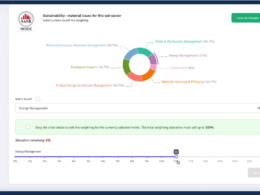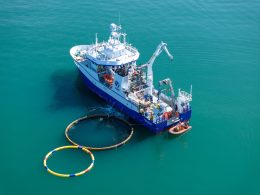The XPRIZE for Carbon Removal, funded by Elon Musk’s charitable foundation, has awarded $100 million to six companies developing innovative methods to extract carbon dioxide from the atmosphere—offering a boost to a nascent industry seen as vital to averting climate catastrophe.
Houston-based Mati Carbon secured the $50 million grand prize for its method of spreading pulverised basalt rock over rice paddies. This process initiates a chemical reaction that transforms CO₂ into stable minerals while enhancing soil fertility. The company is currently operating in India, Zambia and Tanzania.
The awards come amid growing concern over the future of public support for carbon removal in the United States. Programmes under President Joe Biden’s Inflation Reduction Act and Bipartisan Infrastructure Law, which promised tax credits and over $8 billion in funding for carbon removal technologies, are now at risk under the Trump administration. President Donald Trump has pledged to dismantle Biden’s climate policies, and congressional Republicans are seeking sweeping spending cuts.
Industry experts warn that without government subsidies or regulatory requirements, carbon removal is unlikely to become commercially viable at scale. While firms such as Microsoft and Alphabet have committed substantial sums to offset their emissions, most businesses remain reluctant to invest unless compelled by regulation or incentivised by policy.
“Big companies are investing now because they anticipate future regulation,” said Howard Herzog, a senior research engineer at MIT. “Ultimately, it’s about governments creating the right policy environment.”
Nikki Batchelor, executive director of the competition, emphasised that the XPRIZE is intended to complement—not replace—government policy. The prize, judged by an independent panel of scientists, aims to catalyse a diverse portfolio of carbon removal technologies.
Among the runners-up were NetZero (France), which produces biochar from crop residues; Vaulted Deep (Houston), which sequesters organic waste underground; and UNDO (UK), which uses crushed rock to capture and store atmospheric CO₂. Each of the four top teams successfully removed over 1,000 tonnes of carbon dioxide from the atmosphere in the past year.
Other efforts in the sector include Climeworks, a Swiss firm that operates large-scale Direct Air Capture (DAC) facilities in Iceland. DAC technologies use fans and filters to extract carbon from the air before storing it underground—an approach also being explored by Occidental Petroleum.
Experts agree, however, that carbon removal must work in tandem with emissions reduction. “We need a steep decline in emissions through renewables, nuclear, geothermal—everything,” said Jennifer Wilcox, a chemical engineering professor at the University of Pennsylvania. “Carbon capture should never be seen as a substitute for decarbonisation.”
With the UN warning that billions of tonnes of carbon must be removed annually to meet the Paris Agreement targets, the urgency to develop and deploy scalable removal technologies is growing.
“Solar energy became affordable because we started investing 30 years ago,” Wilcox added. “If we don’t start investing in carbon removal now, it won’t be ready when we need it.”





















